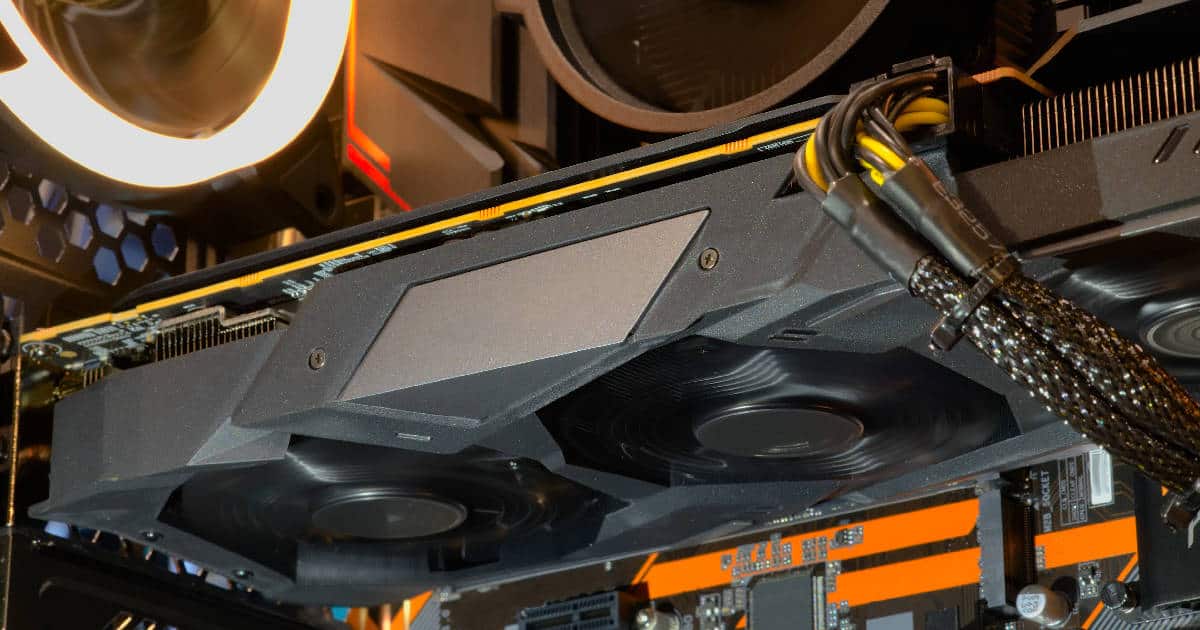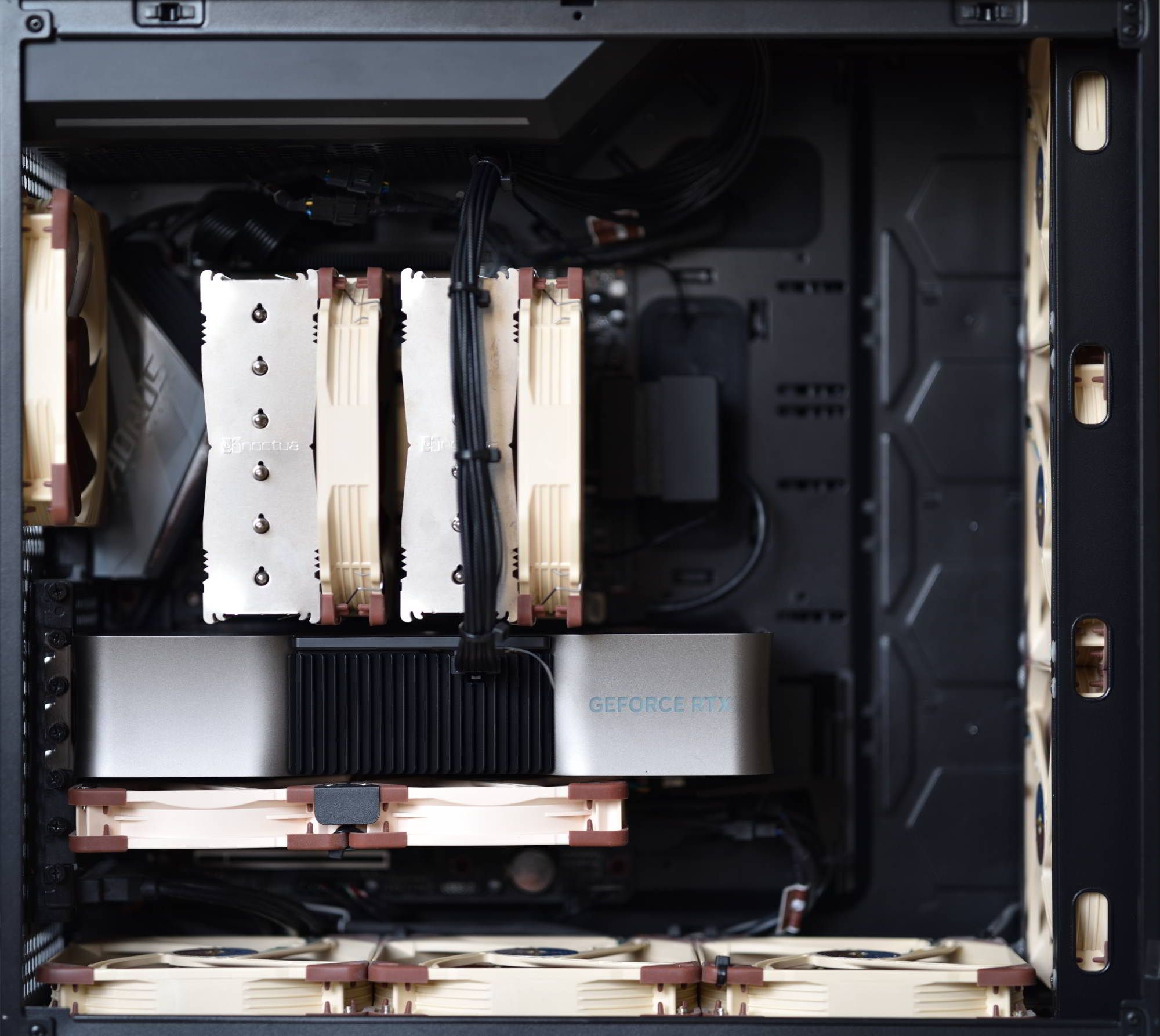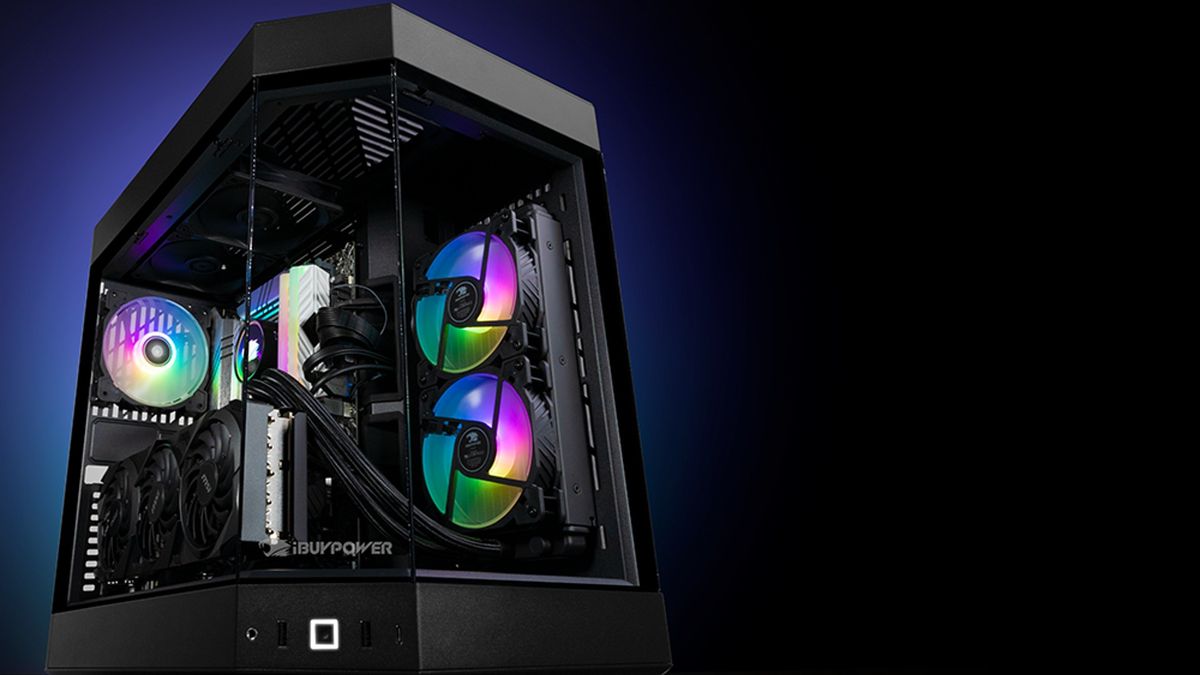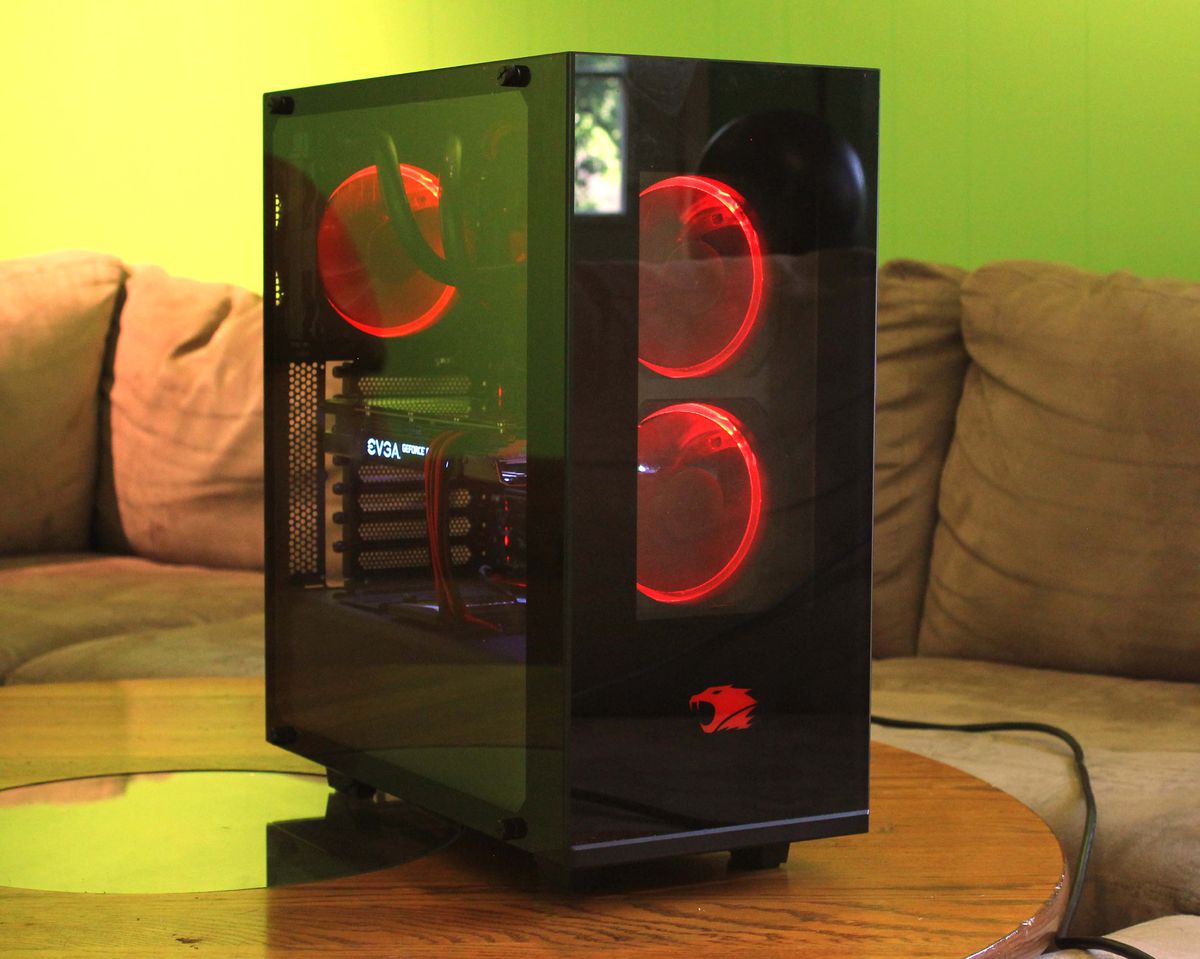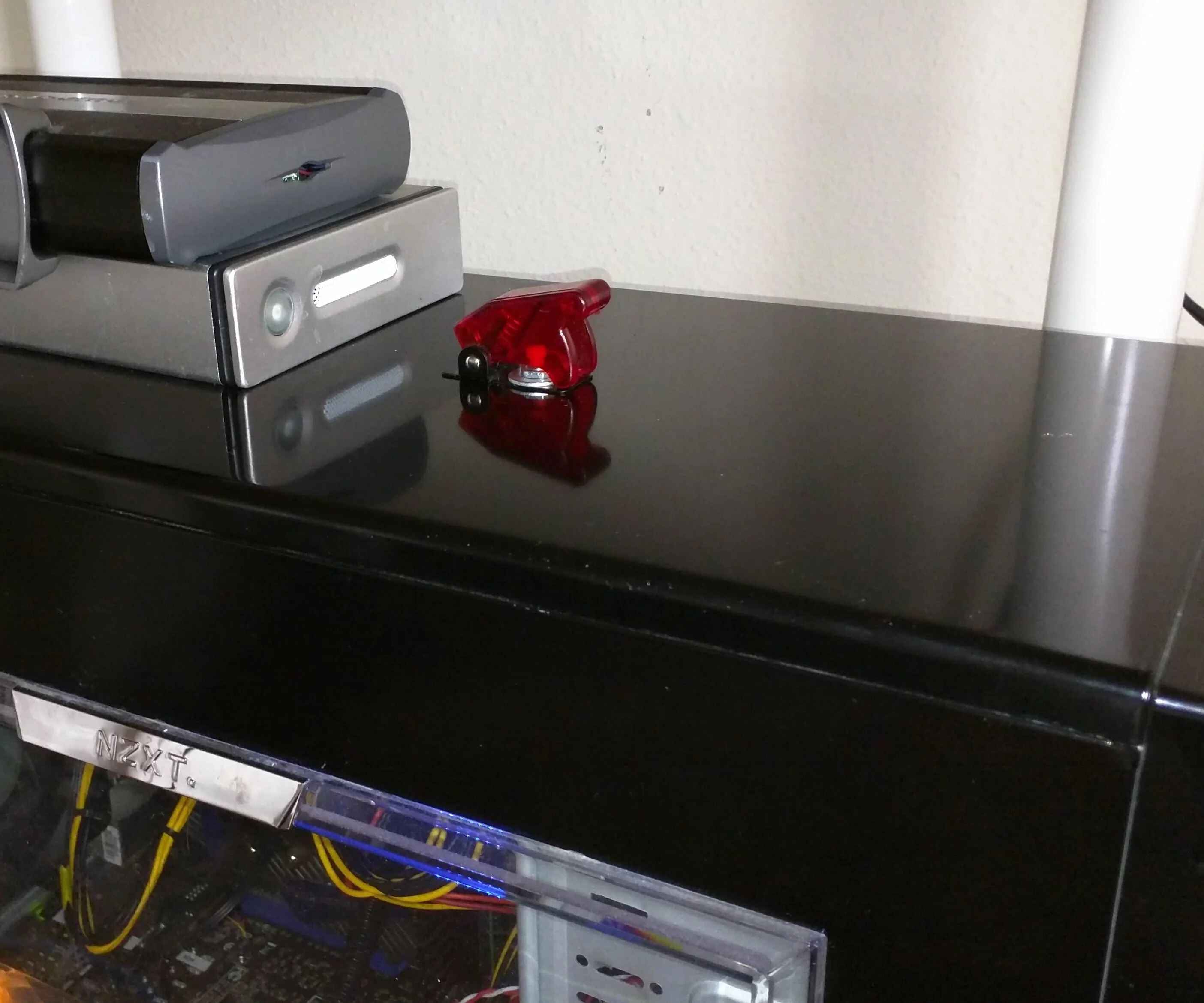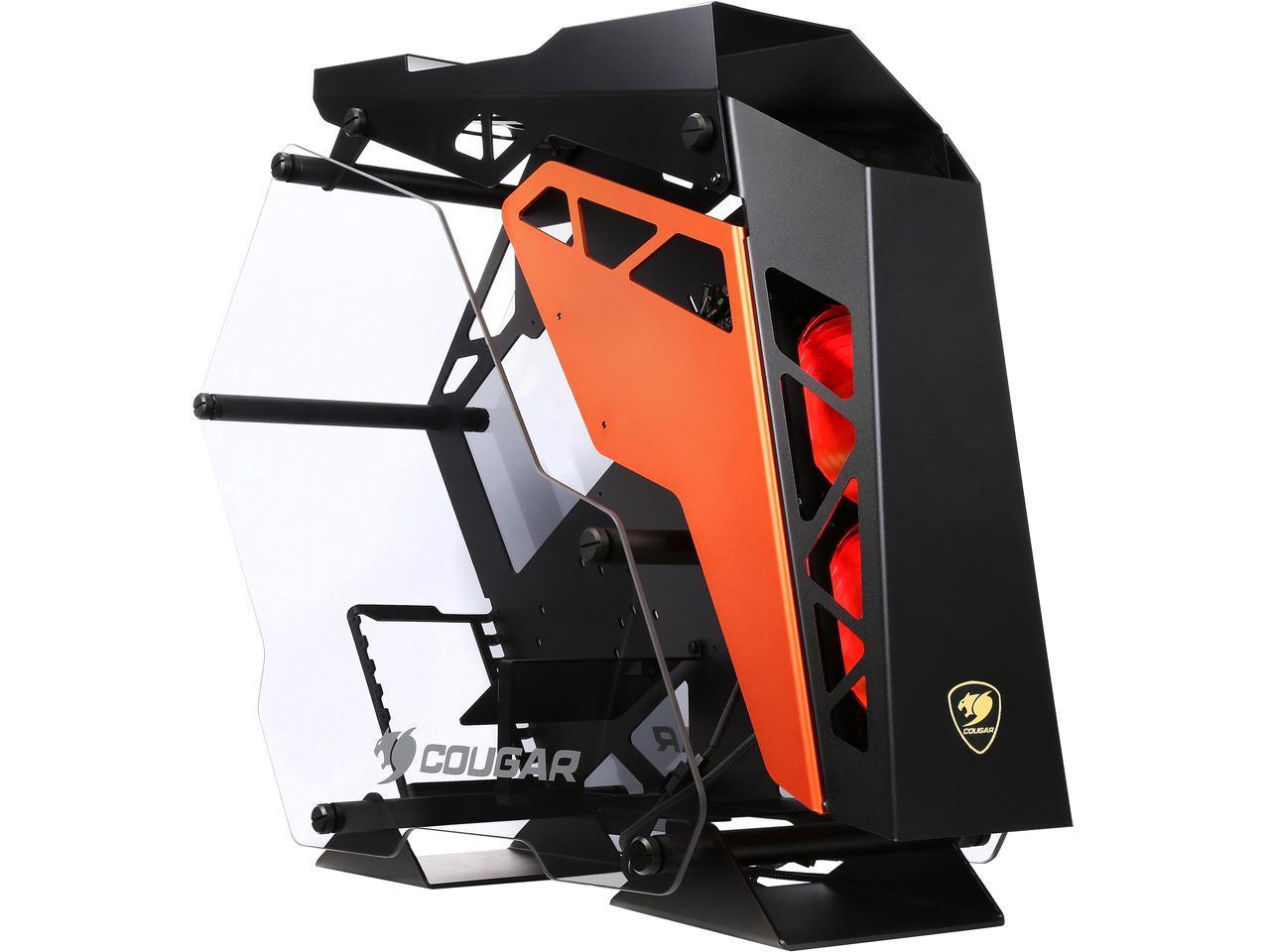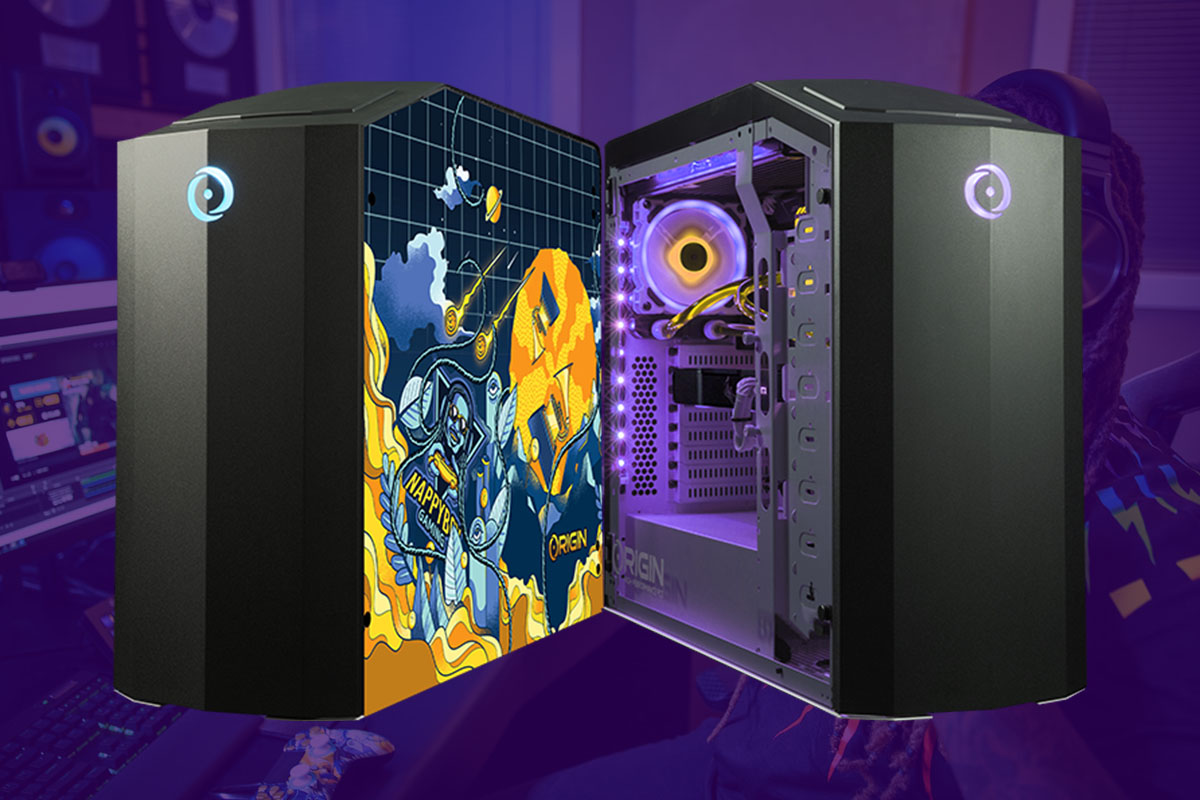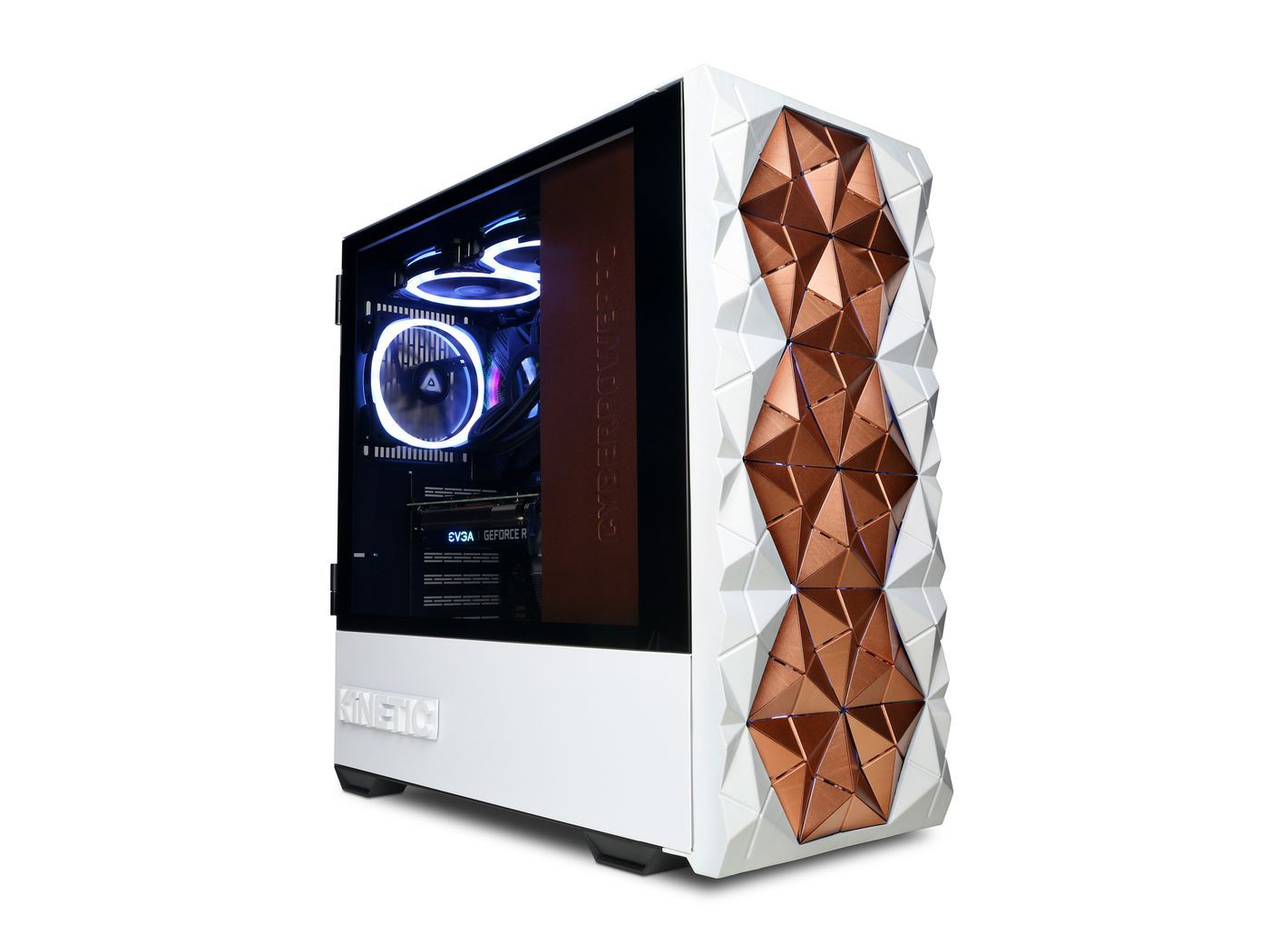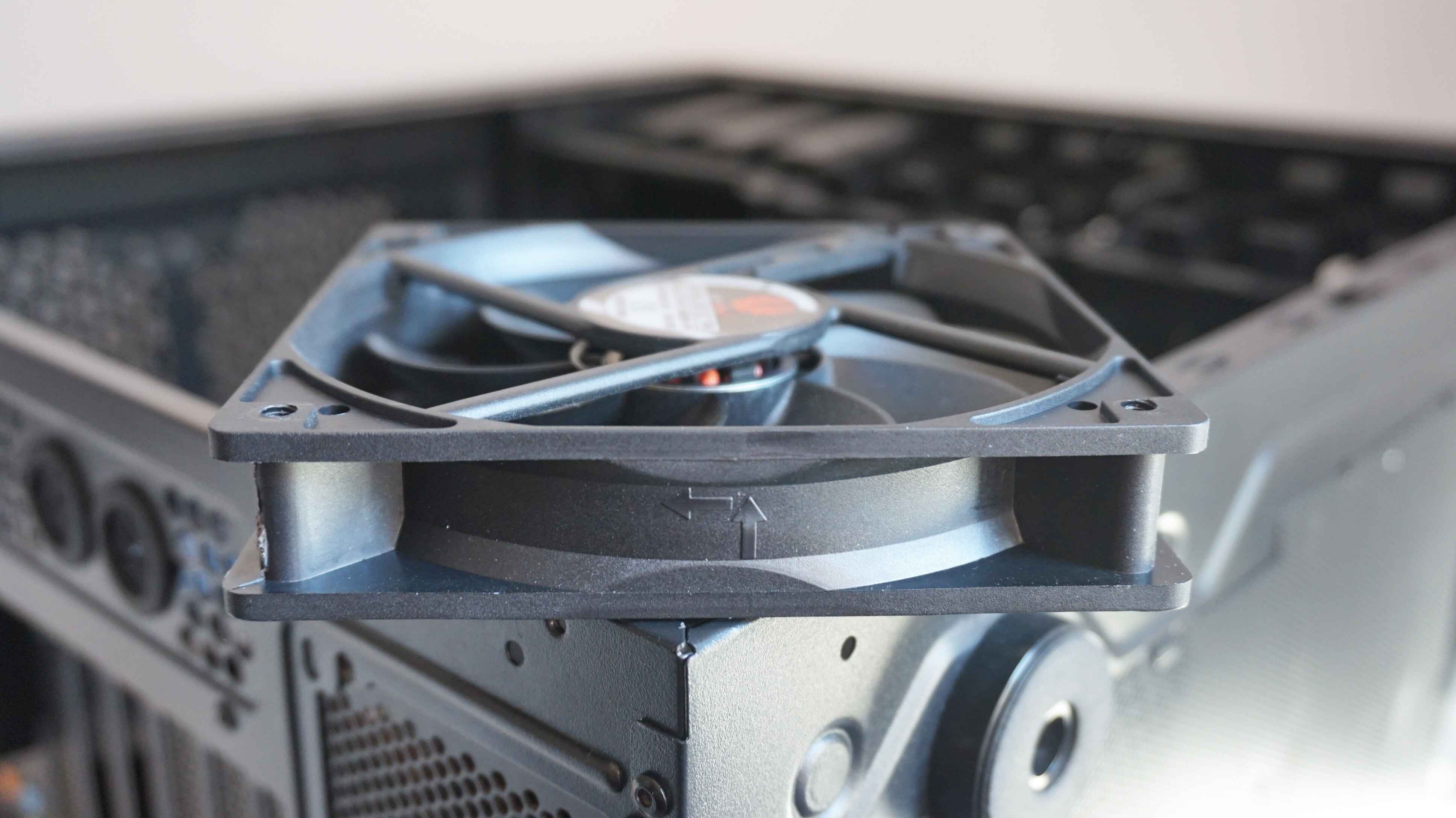Introduction
When it comes to maintaining and upgrading your PC, one component that often gets overlooked is the PC case. While it may seem like a mundane part of your setup, your choice of PC case can have a significant impact on your system’s performance, longevity, and overall aesthetics. But how often should you change your PC case?
While there isn’t a strict rule for how frequently you should replace your PC case, there are several factors to consider. In this article, we will delve into these factors and explore signs that indicate it’s time for a PC case upgrade. Additionally, we will outline the benefits of changing your PC case and provide some guidance on how often you should consider making this change.
Before diving into the specifics, it’s important to note that the information provided in this article is based on general recommendations. Ultimately, the frequency of changing your PC case will depend on your individual needs, preferences, and current setup.
Now, let’s explore the key factors that should influence your decision to change your PC case.
Factors to Consider
When deciding whether or not to change your PC case, there are several important factors to take into consideration. These factors will help you determine if it’s time for an upgrade and what type of case will best suit your needs. Let’s take a closer look at these factors:
1. Dust Accumulation: Over time, PC cases can accumulate dust and debris, which can hinder the cooling performance of your system. Some cases are better equipped with dust filters and ventilation systems to minimize the impact of dust buildup. If your current case lacks sufficient dust protection or if you notice excessive dust accumulation, it may be time to consider a new case.
2. Heat Management: Effective heat management is crucial for maintaining optimal performance and preventing hardware damage. If your current case struggles to keep temperatures in check, leading to frequent overheating issues, it may be a sign that you need a case with better airflow and cooling capabilities.
3. Compatibility with Hardware Upgrades: As you upgrade and add new components to your PC, you may find that your current case doesn’t have enough space or the necessary connections to accommodate your new hardware. In such cases, you may need a larger case or one with specific features to support your upgraded components.
4. Aesthetics and Personal Preference: While aesthetics may not be the most critical factor when choosing a PC case, it’s undeniable that a visually appealing case can enhance the overall look of your setup. Whether you prefer a sleek and minimalist design or a bold and eye-catching one, consider your personal style and how the case will fit within your existing setup.
By evaluating these factors, you can determine whether your current PC case meets your requirements or if it’s time for an upgrade. In the next sections, we will explore the signs that indicate a need for a new PC case and the benefits you can expect from making a change.
Dust Accumulation
One of the primary factors to consider when deciding if it’s time to change your PC case is the accumulation of dust. Dust is an unavoidable element that can severely impact the performance and lifespan of your computer components.
A build-up of dust inside the case can obstruct proper airflow and cause components to overheat. Over time, this can result in decreased performance, system instability, and even hardware failure. Additionally, excessive dust can clog fans and cooling vents, reducing their efficiency and increasing noise levels.
If you notice a significant amount of dust inside your current PC case, despite regular cleaning, it may be an indication that your case isn’t equipped with adequate dust filters or ventilation systems. Some modern cases are designed with removable dust filters that prevent dust particles from entering the case and accumulating on critical components.
By upgrading to a case with enhanced dust protection, you can ensure a cleaner and better-maintained system. These cases often feature filtered intake fans, dust filters in removable panels, or even built-in air purifying systems. These features help keep dust at bay and maintain optimal airflow, improving your PC’s overall performance and reducing the frequency of cleaning.
It’s important to note that the rate at which dust accumulates can vary depending on factors such as your environment, system usage, and the number of devices connected to your PC. If you work in a dusty or pet-friendly environment, you may experience a faster build-up of dust. In such cases, it might be beneficial to invest in a case with exceptional dust protection that can effectively combat these conditions.
Regular cleaning and maintenance are essential for any PC, but if you find yourself frequently battling dust inside your current case, it might be time to upgrade to a more dust-resistant option. Remember, reducing dust accumulation can greatly improve your PC’s performance, extend its lifespan, and minimize the risk of overheating and hardware failure.
Heat Management
Heat management is crucial for maintaining optimal performance and reliability in your PC. If your current case struggles to dissipate heat effectively, it can lead to overheating issues that can damage your components and affect the overall stability of your system.
When components such as the CPU and GPU generate heat during operation, it is essential for that heat to be promptly expelled from the case. A good PC case will have adequate airflow and cooling mechanisms to facilitate this heat dissipation process. Additionally, it should provide ample space for fans, heatsinks, and liquid cooling solutions if necessary.
If you constantly find your system running hot, experiencing thermal throttling, or encountering frequent shutdowns due to overheating, it is an indication that your current case is not effectively managing heat. Upgrading to a case with improved heat management features can significantly improve your PC’s performance and stability.
Modern PC cases often come equipped with features designed to enhance heat management. These include strategically positioned vents, mesh front panels, and space for additional fans or liquid cooling radiators. These features allow for better airflow, ensuring that cool air reaches your components while hot air is efficiently expelled from the case.
Consider the thermal requirements of your hardware and choose a case that offers adequate cooling support. Pay attention to factors such as the number and size of fan mounting points, the presence of dust filters to prevent obstructions, and options for liquid cooling if necessary.
It’s worth noting that proper cable management is also crucial for efficient heat management. A cluttered and disorganized interior can impede airflow and contribute to higher temperatures. Look for a case that offers ample room and cable routing options to keep your cables neat and tidy.
By prioritizing heat management with an upgrade to a case that provides improved airflow and cooling capabilities, you can mitigate the risk of overheating-related issues and ensure that your components perform optimally for longer periods.
Compatibility with Hardware Upgrades
As technology advances and your computing needs evolve, you may find yourself upgrading various components of your PC. Whether it’s adding more memory, upgrading your graphics card, or installing additional storage devices, compatibility with these hardware upgrades is a crucial consideration when deciding if it’s time for a new PC case.
PC cases come in various sizes and form factors, and not all of them can accommodate the same range of hardware components. If your current case lacks the necessary space, mounting options, or connectors to support your upgraded components, it may be time to consider a case that offers better compatibility.
One of the key factors to consider is the size and form factor of your motherboard. There are different form factors, such as ATX, Micro-ATX, and Mini-ITX, and your case needs to be compatible with the specific form factor of your motherboard. Additionally, consider the length of your graphics card, the number of drive bays for storage devices, and the clearance for CPU coolers. These specifications will vary from case to case, so ensuring compatibility is vital.
Moreover, the ability to easily install and upgrade hardware is essential for a seamless and hassle-free experience. Choose a case that offers tool-less installation or features like removable drive bays, expansion card slots, and easy-to-access internal compartments. This will make it easier to swap components or add new ones without the need for complicated disassembly.
Another critical consideration is future-proofing your system. While it may be impossible to anticipate every upgrade you’ll make in the future, choosing a case with ample room for expansion can save you from the hassle of having to change your case with each hardware upgrade. Look for cases that offer multiple expansion slots, extra drive bays, and versatile mounting options to accommodate future upgrades.
By ensuring compatibility with your hardware upgrades, you can avoid potential issues such as a cramped interior, difficulty in installing components, or the need to purchase additional accessories or adapters. Investing in a case that provides optimal compatibility will contribute to a smoother and more efficient upgrade process as you continue to enhance your PC.
Aesthetics and Personal Preference
While the performance and functionality of your PC case are paramount, we shouldn’t underestimate the importance of aesthetics and personal preference. Your PC case is not just a functional component; it’s also a visual representation of your personal style and a part of your overall setup.
Choosing a case that matches your aesthetic preferences can have a significant impact on your enjoyment of your PC. Whether you prefer a sleek and minimalist design, a bold and vibrant look, or something in between, there are numerous options available to suit your taste.
Consider the overall theme or color scheme of your setup and choose a case that complements or enhances it. Some cases come with built-in RGB lighting or provide customization options for lighting effects, allowing you to create a visually appealing and synchronized setup.
Additionally, think about the size and form factor of the case and how it fits within your available space. If you have limited desk space, a smaller form factor case may be more suitable. On the other hand, if you value expandability and room for future upgrades, a larger case may be the better choice.
Ease of use and accessibility are also crucial considerations. Look for cases that have convenient front panel connections, easily accessible I/O ports, and well-designed cable management solutions. These features not only contribute to the overall aesthetics of your setup but also improve the user experience and make maintenance and upgrades more straightforward.
Ultimately, your PC case should reflect your personal style while providing the functionality you need. Take the time to explore different case options, read reviews, and consider your own preferences to find the perfect balance between aesthetics and functionality.
Remember, your PC case is not just a box housing your components; it’s an opportunity to express your creativity and make a statement. Choose a case that aligns with your personal style and enhances the visual appeal of your setup.
Signs that It’s Time to Change Your PC Case
While there is no set timeframe for when to change your PC case, there are several signs that can indicate it’s time for an upgrade. Paying attention to these signs will help you determine if your current case is no longer meeting your needs and if it’s time for a change. Here are some common signs to watch out for:
1. Overheating Issues: If your PC consistently overheats, leading to performance slowdowns, unexpected shutdowns, or frequent crashes, it may be a sign that your current case’s cooling capabilities are insufficient. Upgrading to a case with better airflow and improved ventilation can help dissipate heat more effectively, keeping your components at optimal temperatures.
2. Persistent Dust Build-Up: Despite regular cleaning, if you find that dust continues to accumulate inside your case quickly and significantly, it could be an indicator that your current case’s dust protection measures are inadequate. Switching to a case with better dust filters and ventilation can help minimize dust buildup and improve the cleanliness of your components.
3. Limited Expansion Options: If you frequently upgrade your hardware or plan to do so in the future, but find that your current case lacks space, mounting points, or connectors to accommodate new components, it may be time to consider a more spacious and versatile case. Having ample room for expansion will make future upgrades easier and prevent compatibility issues.
4. Inadequate Cable Management: If your cables are tangled, obstructing airflow, or causing a cluttered and messy interior, it may be a sign that your current case lacks proper cable management options. Upgrading to a case with better cable routing options and tie-down points will not only improve aesthetics but also enhance airflow and ease maintenance.
5. Noise and Vibration: Excessive noise or vibrations coming from your PC can be bothersome and indicate a case that lacks proper noise insulation and vibration dampening features. Consider a case with noise-reducing materials, anti-vibration mounts, and strategic airflow design to minimize noise levels and create a quieter computing environment.
6. Outdated or Unappealing Design: If your current case looks outdated, no longer matches your aesthetics, or simply doesn’t excite you anymore, it might be time for a change. Upgrading to a case with a modern and visually appealing design will not only refresh your setup but also enhance your overall enjoyment of using your computer.
Pay attention to these signs and assess if they apply to your current PC case. If you notice one or more of these issues, it’s likely a good indication that it’s time to consider upgrading to a new case that can better meet your needs and enhance your PC experience.
Overheating Issues
One of the primary signs that it’s time to change your PC case is consistent overheating issues. Overheating can lead to a multitude of problems, including reduced performance, system instability, and even permanent damage to your hardware components.
If you find that your computer frequently reaches high temperatures, experiences thermal throttling, or shuts down unexpectedly due to overheating, it’s likely an indication that your current case is not effectively managing heat. Inadequate airflow, poor ventilation, or a cramped interior can contribute to these issues.
Upgrading to a case with better cooling capabilities and improved airflow can help dissipate heat more efficiently, keeping your components at safe operating temperatures. Look for a case that offers ample room for fans, strategic placement of vents and air intakes, and support for liquid cooling solutions if necessary.
Additionally, consider the positioning of your current case within your workspace. Ensure that the intake and exhaust vents are not obstructed by walls, furniture, or other objects that can limit airflow. If your current case is placed in an enclosed space or lacks proper ventilation, changing to a case with better ventilation and a more open design can help alleviate overheating issues.
Another factor to consider is the size of components within your computer. High-performance CPUs and graphics cards generate more heat, requiring better cooling solutions. If your current case is unable to accommodate larger heatsinks or longer graphics cards, it can contribute to increased temperatures and potential overheating problems.
It’s important to note that the specific cooling needs of your system may depend on factors such as your hardware configuration, ambient temperature, and usage patterns. It’s always recommended to monitor your system temperatures using software tools and adjust fan speeds or upgrade your cooling solutions as needed.
By addressing the issue of overheating through a case upgrade, you can ensure that your components operate within safe temperature limits, improving overall performance and extending their lifespan. Moreover, a cooler system will allow you to push your hardware to its full potential without worrying about the negative consequences of excessive heat.
Persistent Dust Build-Up
If you find that despite regular cleaning, your PC case is consistently plagued by excessive dust buildup, it may be a sign that it’s time for a change. Dust accumulation can impede proper airflow, restrict cooling performance, and even cause damage to your computer components over time.
Some older or poorly-designed cases may lack adequate dust filters or ventilation systems, allowing dust particles to easily enter and settle on sensitive hardware components. This can result in elevated temperatures, reduced cooling efficiency, and increased fan noise as fans work harder to circulate air through dusty internals.
Upgrading to a case with better dust protection measures can significantly reduce the amount of dust that enters your system. Modern cases often feature removable dust filters that cover intake fans and ventilation areas, preventing dust particles from entering the case. These filters can be easily cleaned or replaced, minimizing the amount of dust that collects on your components.
In addition to improved dust filters, some cases also incorporate positive pressure airflow setups. By introducing more air into the case than is expelled, positive pressure creates an outward airflow that minimizes the entry of dust through unfiltered gaps or openings. This can further reduce dust accumulation and the need for frequent cleaning.
Consider the environment in which your PC is located. Dustier surroundings, such as homes with pets or construction areas, may require additional dust protection. Choosing a case with effective dust filters and taking proactive measures, such as cleaning filters regularly or using compressed air to remove dust from the case, can help maintain a cleaner interior.
Reducing dust accumulation not only improves the aesthetics of your PC but also promotes better airflow and cooling. With less dust obstructing fans and heatsinks, components can operate at lower temperatures, ensuring optimal performance and extending their lifespan.
Regular maintenance, including the occasional cleaning of dust filters and the interior of your case, is still necessary even with the best dust protection. However, by upgrading to a case with superior dust management, you can significantly reduce dust buildup and its potential negative effects on system performance and longevity.
Limited Expansion Options
As technology advances and your computing needs evolve, you may find yourself needing to upgrade or expand your PC with new hardware components. If your current case has limited expansion options, it can hinder your ability to add or upgrade certain components, leading to compatibility issues and a lack of room for future growth.
One of the main considerations when it comes to expansion is the physical space within the case. If your case is too small or lacks additional drive bays, expansion slots, or clearance for larger components, it can restrict your ability to add more storage drives, upgrade your graphics card, or install additional expansion cards.
Upgrading to a case with ample room for expansion can provide the flexibility you need. Look for cases that offer multiple drive bays, including options for both 2.5″ and 3.5″ drives, so you can easily increase your storage capacity. Additionally, consider the number and types of expansion slots available, as this will determine your flexibility in adding expansion cards such as sound cards, Wi-Fi adapters, or additional graphics cards for multi-GPU setups.
Think about not only your immediate upgrade plans but also your potential future needs. If you anticipate wanting to add more hardware components or upgrade existing ones in the future, choosing a case with extra room and support for higher-end hardware can save you from needing to change your case yet again.
Furthermore, pay attention to the case’s wiring options. A case with good cable management features, such as ample routing holes, tie-down points, and even built-in cable covers or compartments, can make it easier to manage and organize cables. This not only improves airflow and reduces clutter but also makes it more convenient to add or remove components without being hindered by tangled cables.
By upgrading to a case with better expansion options, you can ensure that your PC can accommodate your current hardware needs, as well as any future upgrades or additions. A case that provides sufficient room, drive bays, and expansion slots will allow your system to grow alongside your computing needs, without the limitations of a cramped or incompatible case.
Benefits of Changing Your PC Case
Changing your PC case can offer several benefits that go beyond just aesthetics. From improved airflow to enhanced cooling performance, here are some advantages to consider when deciding to change your PC case:
1. Improved Airflow: A new PC case with a smart design can provide better airflow throughout the system. Cases with strategic ventilation areas, well-placed fans, and cable management options help to ensure that cool air reaches the components while hot air is efficiently expelled. This improved airflow can lead to lower temperatures and better overall system performance.
2. Enhanced Cooling Performance: Upgrading to a case with better cooling capabilities can help address issues of overheating. Cases designed to accommodate larger and more efficient cooling solutions, such as liquid cooling radiators or larger fans, can provide better heat dissipation and enable you to push your components to their full potential without thermal throttling or instability.
3. More Space for Hardware: A larger PC case offers more room to accommodate additional hardware components or upgrades. This means you’ll have the flexibility to add more storage drives, upgrade to a larger graphics card, or install expansion cards for additional features, such as sound cards or Wi-Fi adapters. Having more space allows your system to evolve with your needs without the limitations of a smaller case.
4. Better Cable Management: Cable clutter can hinder airflow and make it difficult to maintain or upgrade your system. A new PC case with improved cable management options, such as ample routing holes, tie-down points, or even built-in cable covers, can help keep cables organized and out of the way. This not only improves airflow within the case but also makes it easier to work on your system when adding or removing components.
5. Enhanced Aesthetics: While aesthetics shouldn’t be the sole reason for changing your PC case, it can certainly contribute to a more visually appealing setup. Upgrading to a case with a modern, sleek design or customizable RGB lighting options can transform the look of your PC, complementing your overall style and creating a visually pleasing environment.
6. Reduced Noise: Some PC cases come with noise-dampening materials or features designed to minimize vibration and noise. By upgrading to a case that incorporates these noise-reducing elements, you can create a quieter computing experience. This is especially beneficial if you have a high-performance system or if your current case’s design contributes to excessive fan noise.
These benefits of changing your PC case can improve both the performance and aesthetics of your system. Whether you’re looking to address cooling issues, expand your hardware, or simply give your PC a fresh new look, upgrading to a new case can provide the functionality, versatility, and visual appeal that enhances your overall computing experience.
Improved Airflow
One of the significant benefits of changing your PC case is the potential for improved airflow. Proper airflow is essential for maintaining optimal performance and cooling efficiency within your system. A new case with a well-designed airflow system can greatly enhance the overall airflow dynamics, resulting in several advantages.
A case with strategic ventilation areas and well-placed fans can ensure that cool air is efficiently brought into the case while hot air is effectively expelled. This allows for a continuous exchange of fresh, cool air with the components that generate heat, helping to maintain lower temperatures and prevent overheating.
Improved airflow can directly affect the performance of various components. Cooler temperatures mean that your CPU, GPU, and other critical hardware can operate at their optimal levels without experiencing thermal throttling or performance degradation. This can lead to improved stability, increased longevity, and better overall system responsiveness.
Furthermore, proper airflow helps to distribute temperature evenly across your components, minimizing hotspots. This balanced thermal environment can prevent any individual component from being exposed to excessively high temperatures, reducing the risk of premature failure or damage.
Not only does improved airflow benefit the internal components, but it also contributes to the longevity of other peripherals such as storage drives. Cooler temperatures can help prolong the lifespan of your hard drives or solid-state drives, ensuring their reliability and performance over time.
When considering a case upgrade, look for features such as strategically placed intake and exhaust vents, mesh front panels, and options for additional fans. Additionally, consider the placement of these fans to ensure that they align with the hotspots generated by your specific hardware configuration.
Proper cable management also plays a role in improving airflow. A new case with ample space for routing cables, tie-down points, and covered compartments helps organize and optimize cable layouts. This reduces cable clutter that can obstruct airflow, allowing for unimpeded airflow throughout the case.
By investing in a case that offers superior airflow, you can create an environment that keeps your components running at their best. Improved airflow not only enhances performance and stability but also contributes to the longevity of your hardware, ensuring a more reliable and efficient computing experience.
Enhanced Cooling Performance
Upgrading your PC case can provide significant enhancements to cooling performance. Effective cooling is vital for maintaining optimal temperatures and preventing thermal issues that can affect system performance and lifespan. A new case with improved cooling capabilities can offer several advantages.
One of the key considerations for enhanced cooling is the ability to accommodate larger and more efficient cooling solutions. A larger case provides more space for larger fans, liquid cooling radiators, and heatsinks, allowing for better heat dissipation from critical components such as the CPU and GPU.
Liquid cooling systems, in particular, offer excellent cooling performance by transferring heat away from components more efficiently than traditional air cooling. They utilize radiators and water blocks to absorb and dissipate heat, ensuring that your components stay within safe temperature ranges even during heavy workloads.
Additionally, some cases are specifically designed for superior airflow and cooling. These cases feature optimized fan placement, mesh front panels for increased airflow, and well-designed internal layouts to facilitate efficient cooling. Enhanced cooling systems help to maintain lower temperatures, preventing thermal throttling and ensuring stable performance even during demanding tasks.
With improved cooling, you can push your hardware to its maximum potential without worrying about heat-related performance issues. Overclocking enthusiasts or users engaged in resource-intensive tasks such as gaming, video editing, or 3D rendering will particularly benefit from a case that offers enhanced cooling capabilities.
It’s important to note that investing in a new case with enhanced cooling also means considering additional components like high-quality fans or liquid cooling solutions. These components work synergistically with the case to provide effective cooling performance.
When choosing a new case, consider the cooling needs of your hardware and select one that offers sufficient support for your desired cooling solution. Look for features such as fan mounts, radiator compatibility, dust filters, and options for fan speed control, allowing you to tailor the cooling performance based on your specific requirements.
By upgrading to a case that provides enhanced cooling performance, you can ensure that your components operate within optimal temperature ranges, maximizing their performance and longevity. Whether you prioritize overclocking capabilities or simply want to keep your system running cool and quiet, a case with excellent cooling options is a valuable investment.
More Space for Hardware
Changing your PC case can offer the benefit of more space for hardware, allowing for greater flexibility and expansion opportunities. If your current case feels cramped or lacks sufficient room to accommodate your hardware needs, upgrading to a larger case can provide numerous advantages.
One of the primary advantages of having more space is the ability to add or upgrade hardware components. If you find yourself running out of storage capacity, a case with additional drive bays can allow you to expand your storage options. Look for cases that offer both 2.5″ and 3.5″ drive bays, providing versatility for SSDs, HDDs, and even advanced storage solutions like NVMe drives.
A larger case also provides more room for graphics cards. High-performance GPUs tend to be longer or have multiple fans for efficient cooling. If your current case has limited clearance for longer graphics cards, upgrading to a case with ample space allows you to install the latest and most powerful GPUs, ensuring optimal graphics performance for gaming or content creation.
Expansion slots are another consideration when it comes to hardware compatibility. A case with additional expansion slots allows you to add expansion cards, such as dedicated sound cards, Wi-Fi adapters, or additional USB ports. These expansion cards can enhance the audio experience, improve wireless connectivity, or provide extra connectivity options for peripherals.
Consider your future hardware needs when choosing a case. Upgrading to a case with more space than you currently require can future-proof your system, ensuring you have the flexibility to add more hardware or upgrade existing components as your needs change.
Another advantage of having more space is the ease of installation and maintenance. A larger case provides ample room to work with, allowing for a more accessible and hassle-free installation process. It also makes cable management more straightforward, reducing cable clutter and improving airflow within the case.
Ultimately, having more space for hardware gives you the freedom to customize your system to your exact needs. Whether you’re a gamer looking to install multiple storage drives and a powerful GPU, or a content creator requiring multiple expansion cards and ample room for future upgrades, a case with more space offers the versatility you need to build and grow your ideal PC setup.
Better Cable Management
Upgrading your PC case can lead to improved cable management, resulting in a neater and more organized interior. Proper cable management not only enhances the aesthetics of your system but also offers several functional benefits.
A new case with better cable management options provides ample space, routing holes, and tie-down points to help you organize and route cables neatly. By keeping cables organized and tucked away, you can improve airflow within the case and reduce the risk of cables obstructing fans or other components.
Neatly managed cables also make it easier to access and maintain components. When it’s time to clean your PC or upgrade hardware, having organized cables simplifies the process, allowing for easier access to components and reducing the risk of accidentally disconnecting or damaging cables.
Better cable management enhances the cooling performance of your system. With cables neatly routed and secured, there is less obstruction of airflow, allowing fans and heatsinks to efficiently cool the components. Improved airflow prevents heat build-up and contributes to better overall system stability and performance.
Additionally, tidy cable management reduces signal interference and potential electrical issues. By separating power and data cables, you can minimize electromagnetic interference (EMI) that can degrade the quality of signals transmitted between components. This can lead to improved data transfer rates, better audio/video performance, and overall system reliability.
Investing in a case with built-in cable management features, such as rubber grommets or dedicated cable compartments, can further enhance cable management. These features help hide and keep cables out of sight, resulting in a clean and clutter-free interior.
When choosing a new case for better cable management, consider the size of the case and the number and types of cable routing options available. Opt for a case that offers sufficient space behind the motherboard tray, tie-down points, and cable routing holes that align with your desired cable management configuration.
By upgrading to a case with better cable management, you can create a cleaner and more organized system. Not only does this improve airflow, cooling performance, and system stability, but it also enhances the overall aesthetics of your setup. A clutter-free interior projects a professional and polished look, making your PC not just a high-performance machine but also a visually appealing centerpiece of your workstation or gaming setup.
How Often Should You Change Your PC Case?
Determining how often to change your PC case depends on several factors, including your specific needs, preferences, and the current condition of your case. While there isn’t a fixed timeframe for when you should upgrade, there are some guidelines to consider.
One important factor to consider is the longevity of your PC case. Well-built cases made from durable materials can last for many years, outlasting several hardware upgrade cycles. As long as your case remains functional, offers sufficient room for your components, and meets your needs, there may be no pressing need to change it.
However, there are instances where it is advisable to consider a case upgrade. If your current case is outdated, lacks modern features, or has limited compatibility with new hardware, it may be time to explore newer options. Upgrading your case can help keep up with the changing technology and ensure your components are housed in a more suitable and efficient environment.
Another consideration is the specific requirements of your hardware. If you are planning to upgrade to more powerful components, such as a high-end graphics card or a larger CPU cooler, it’s important to assess if your current case has sufficient clearance and support. Incompatibility issues can arise when new components exceed the physical limitations of your current case, necessitating a case upgrade.
Additionally, evolving preferences and aesthetics can be a driving factor for changing your PC case. If you no longer find your current case visually appealing or if you’ve grown tired of its design, upgrading to a case that matches your style and preferences can rejuvenate your setup and enhance your enjoyment.
It’s worth considering your usage and activities as well. If you are engaged in tasks that demand high-performance and generate substantial heat, such as gaming, video editing, or 3D rendering, regular case upgrades may be necessary to accommodate better cooling solutions and maintain optimal thermal conditions.
Ultimately, the decision to change your PC case should be based on your individual needs and circumstances. Take into account factors such as the condition and functionality of your current case, compatibility with hardware upgrades, aesthetic preferences, and thermal requirements. Assess these factors periodically and make a decision based on the specific needs of your system.
Remember, a well-maintained and properly selected case can serve you well for several years, but it’s essential to evaluate and upgrade when necessary to ensure a smooth and efficient computing experience.
Conclusion
Your PC case plays a crucial role in the performance, longevity, and overall aesthetics of your computer system. While there is no definitive answer to how often you should change your PC case, several factors can guide your decision-making process.
Considerations such as dust accumulation, heat management, compatibility with hardware upgrades, and personal preferences all come into play. If you notice persistent dust buildup, overheating issues, limited expansion options, or if your case no longer meets your aesthetic preferences, it may be time to explore a case upgrade.
Upgrading your PC case offers numerous benefits. You can experience improved airflow, enhanced cooling performance, and more space for hardware components. Additionally, better cable management can result in increased airflow, reduced clutter, and improved accessibility for maintenance and upgrades.
When changing your PC case, it’s important to select one that meets your specific needs. Consider the size and form factor of your motherboard, compatibility with hardware upgrades, and the overall style and aesthetics that align with your preferences. Additionally, prioritize cases with features like dust protection, ample ventilation, and adequate space for future expansion.
Ultimately, the decision to change your PC case should be based on your unique requirements and circumstances. Regularly evaluate the condition of your case, consider any hardware upgrades you anticipate, and assess if your current case meets your current and future needs.
Remember, while a PC case upgrade can bring significant benefits, it’s essential to budget for it and ensure compatibility with your existing components. By making a thoughtful decision and selecting the right case, you can optimize the performance, lifespan, and aesthetics of your computer system for years to come.







